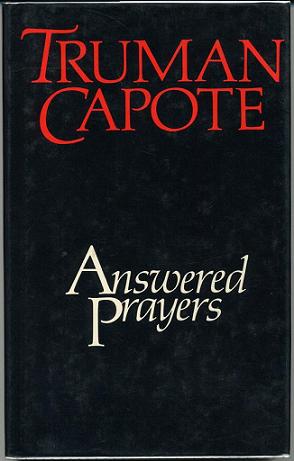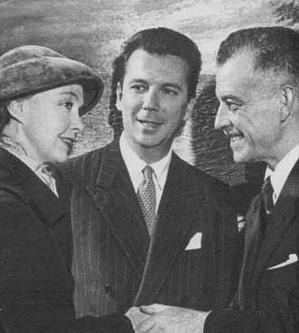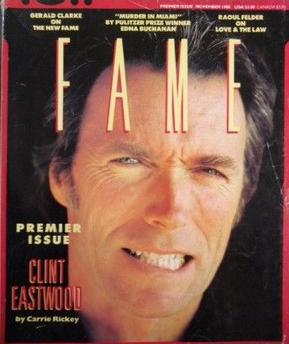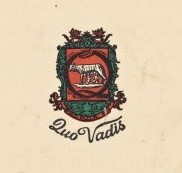
Andy Warhol was an American visual artist, film director, producer, and leading figure in the pop art movement. His works explore the relationship between artistic expression, advertising, and celebrity culture that flourished by the 1960s, and span a variety of media, including painting, silkscreening, photography, film, and sculpture. Some of his best-known works include the silkscreen paintings Campbell's Soup Cans (1962) and Marilyn Diptych (1962), the experimental films Empire (1964) and Chelsea Girls (1966), and the multimedia events known as the Exploding Plastic Inevitable (1966–67).

Truman Garcia Capote was an American novelist, screenwriter, playwright and actor. Several of his short stories, novels, and plays have been praised as literary classics, including the novella Breakfast at Tiffany's (1958) and the true crime novel In Cold Blood (1966), which he labeled a "non-fiction novel". His works have been adapted into more than 20 films and television dramas.
Brigid Emmett Berlin was an American artist and Warhol superstar.

Answered Prayers is an unfinished novel by American author Truman Capote, published posthumously in 1986 in England and 1987 in the United States.

Interview is an American magazine founded in late 1969 by artist Andy Warhol and British journalist John Wilcock. The magazine, nicknamed "The Crystal Ball of Pop", features interviews with celebrities, artists, musicians, and creative thinkers. Interviews were usually unedited or edited in the eccentric fashion of Warhol's books and The Philosophy of Andy Warhol: From A to B and Back Again.
Le Pavillon was a New York City restaurant that defined French food in the United States from 1941 to 1966.
La Côte Basque was a New York City restaurant. It opened in the late 1950s and operated until it closed on March 7, 2004. In business for 45 years, upon its closing The New York Times called it a "former high-society temple of French cuisine at 60 West 55th Street."
Lutèce was a French restaurant in Manhattan that operated for more than 40 years before closing in early 2004. It once had a satellite restaurant on the Las Vegas Strip.
The Ferus Gallery was a contemporary art gallery which operated from 1957 to 1966. In 1957, the gallery was located at 736-A North La Cienega Boulevard, Los Angeles in the U.S. state of California. In 1958, it was relocated across the street to 723 North La Cienega Boulevard where it remained until its closing in 1966.

Jed Johnson was an American interior designer and film director. Initially hired by Andy Warhol to sweep floors at The Factory, he subsequently moved in with Warhol, and was his boyfriend for twelve years. As a passenger in the first class cabin, he was killed when TWA Flight 800 came down shortly after takeoff in 1996.

Beautiful Darling: The Life and Times of Candy Darling, Andy Warhol Superstar is a 2010 feature-length documentary film about Candy Darling, pioneering trans woman, actress and Andy Warhol superstar. The film was written and directed by James Rasin and features Chloë Sevigny as "the voice of Candy Darling", reading from Candy's private diaries and letters. Patton Oswalt voices Andy Warhol and Truman Capote. It also features interviews with Factory regulars such as Paul Morrissey, Vincent Fremont, Bob Colacello, Gerard Malanga, Pat Hackett, George Abagnalo, and Fran Lebowitz as well as an archival interview with playwright Tennessee Williams. Louis Durra composed the score.
La Grenouille is a French restaurant at 3 East 52nd Street between Fifth Avenue and Madison Avenue in Midtown Manhattan, New York City. Founded in 1962 by former Henri Soulé apprentice Charles Masson Sr. and his wife Gisèle, later with sons Philippe and Charles, La Grenouille became a location of choice among New York, U.S., and eventually international diners, including designers from the nearby Garment District of Manhattan. It is the last operating New York French haute cuisine restaurant from the 1960s, and remains a highly rated restaurant.

Maxwell's Plum was a bar at 1181 First Avenue, at the intersection with 64th Street, on the Upper East Side of Manhattan in New York City. A 1988 New York Times article described it as a "flamboyant restaurant and singles bar that, more than any place of its kind, symbolized two social revolutions of the 1960s – sex and food". Owned by Warner LeRoy, it closed abruptly on July 10, 1988.

Quo Vadis is a restaurant and private club in Soho, London. It primarily serves modern British food. It was founded in 1926 by Peppino Leoni, an Italian, and has passed through numerous owners since then, including the chef Marco Pierre White, and is currently owned by Sam and Eddie Hart, also the owners of Barrafina. The restaurant is named after the Latin phrase Quo vadis?, meaning "Where are you going?"
Henri Soulé was the proprietor of Le Pavillon and La Côte Basque restaurants in New York City. Soulé also operated The Hedges in Southampton, New York.

Lanfranco Rasponi was an Italian author, critic, and publicist. He is primarily known for his writing on opera and opera singers, especially his 1982 book, The Last Prima Donnas. Born in Florence, he was the son of an Italian aristocrat and an American mother. From the late 1940s to the early 1960s Rasponi was the publicity agent for many opera singers as well as for socialites and fashionable restaurants in New York City. For a while, he also owned the Sagittarius Gallery in Manhattan which specialised in introducing contemporary European artists. After a financial scandal in 1963, he left the United States for Italy and dedicated himself to writing. He spent his last years in Rio de Janeiro where he died at the age of 68.

Lafayette was a French restaurant in New York City located at 202 East 50th Street. It was established in 1965 and closed in the late 1970s. W magazine referred to it in 1972, as one of "Les Six, the last bastions of grand luxe dining in New York." The other five named were La Grenouille, La Caravelle, La Côte Basque, Quo Vadis, and Lutèce; of these, only La Grenouille remains open. In its heyday the restaurant was known for the quality of its cuisine, its celebrity clientele, and the legendary rudeness of its proprietor, Jean Fayet.
Ma Maison was a restaurant opened by Patrick Terrail in October 1973 at 8368 Melrose Avenue, Los Angeles, California. It closed in November 1985. Ma Maison is credited with getting Wolfgang Puck's career off the ground and for starting the trend in cuisine known as "California nouvelle". According to the Los Angeles Times, "By using ingredients sourced from the local farmers markets that highlighted the glory of California's produce and pairing it with French technique, they created a new type of cuisine." Ma Maison was also known for being a hot spot for celebrities and Hollywood figures of the time. Celebrity chronicler Robin Leach wrote, "it truly became the favorite culinary playground for Hollywood's rich and famous."

Fame was an American magazine founded in New York City in 1988. It focused on celebrity profiles, interviews, and photos along with general-interest stories.
Le Coucou is a French restaurant in New York City which opened in 2016. The restaurant's chef is Daniel Rose and Stephen Starr is the owner. The restaurant is located in 11 Howard, a hotel.












